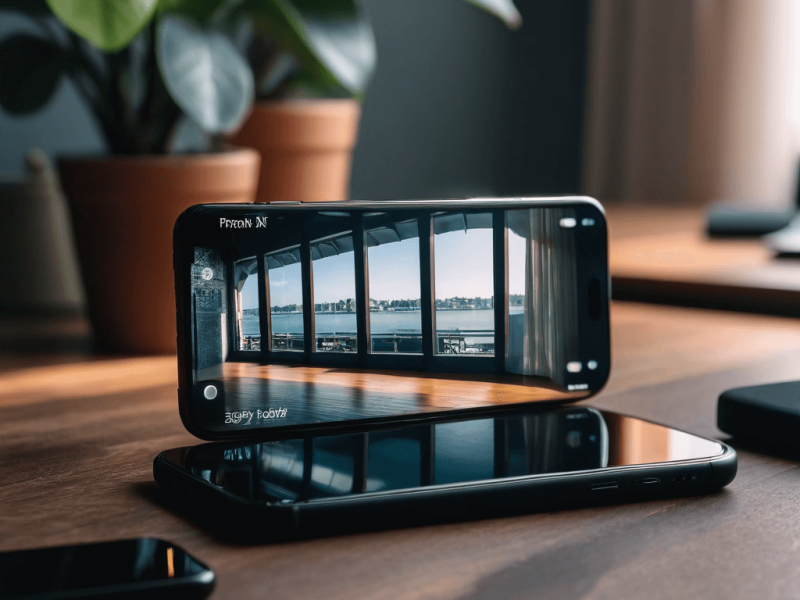In our fast-paced digital world, Digital Detox Strategies are essential for mental clarity and well-being.
Many individuals find themselves overwhelmed by constant notifications and screen time, leading to stress and distraction.
Understanding how to effectively detox from digital devices can transform your life, enhancing focus and productivity.
In this article, we’ll delve into various strategies to reclaim your time and focus, ensuring a healthier relationship with technology.
Understanding Digital Detox
Understanding Digital Detox is crucial in today’s technology-driven world. Many people experience stress and anxiety due to the constant presence of screens and devices in their lives. A digital detox involves taking time away from electronic devices to improve mental health and overall well-being. This concept also emphasizes the importance of being present in the physical world, fostering real-life connections rather than digital ones.
To engage in a digital detox, start by identifying how much time you spend on devices daily. Track your usage and note when you feel most distracted or fatigued. This awareness can guide you in setting boundaries for device use, such as allocating specific times for checking email or social media.
Additionally, consider removing notifications from your phone and apps to decrease distractions. By eliminating unnecessary alerts, you can focus on tasks that truly matter, enhancing productivity and creativity.
Engaging in offline activities is a major part of a successful digital detox. Try reading a book, going for a walk, or practicing a hobby you love. These activities not only occupy your time but also allow your mind to recharge and become more present.
Remember, a digital detox is not about completely abandoning technology; it’s about finding a healthy balance. By embracing digital detox strategies, you can significantly improve your quality of life, enhance your relationships, and regain control over your time.
Benefits of a Digital Detox
A digital detox offers numerous benefits for mental and emotional well-being. One major advantage is the reduction of stress levels. Constant notifications and social media can overwhelm anyone, leading to anxiety and fatigue. By taking a break from digital devices, individuals can clear their minds and minimize distractions.
Another benefit is improved focus and productivity. Without the constant pull of notifications, it becomes easier to concentrate on tasks, whether at work or in personal projects. Many people report that they achieve more in less time when they disconnect from their screens.
A digital detox also enhances relationships. Spending time away from devices allows for more meaningful interactions with family and friends. Engaging in face-to-face conversations or participating in activities together fosters stronger connections.
Additionally, a digital detox encourages the discovery of new hobbies and interests. When not glued to a screen, people have the opportunity to explore various activities, such as reading, exercising, or trying new recipes, which can contribute to a more fulfilling life.
Lastly, disconnecting from digital devices can improve sleep quality. Many studies show that excessive blue light exposure from screens interferes with sleep patterns. By limiting screen time before bed, individuals often find it easier to fall asleep and wake up feeling refreshed.
In conclusion, the benefits of a digital detox are vast, affecting mental health, productivity, relationships, personal growth, and overall well-being.
Simple Steps to Start Detoxing
Starting a digital detox can be simple and rewarding. Here are some steps to help you begin:
1. Set Clear Goals: Determine why you want to detox and what you hope to achieve. Whether it’s reducing screen time, improving mental health, or enhancing relationships, having clear objectives is vital.
2. Choose a Time Frame: Decide how long you want your detox to last. It could be a weekend, a week, or even longer. Pick a time frame that feels manageable and realistic.
3. Inform Others: Let friends and family know about your detox. This can help set expectations for communication. You might consider scheduling regular updates so that loved ones stay connected.
4. Remove Distractions: Before starting, take some time to delete apps that are unnecessary or time-consuming. Disable notifications to avoid being tempted to check your devices constantly.
5. Find Alternative Activities: Prepare a list of offline activities you enjoy or have wanted to try. This can include reading, hiking, crafting, or cooking. Engaging in these activities will help fill the time you would normally spend on devices.
6. Start Slowly: If going totally offline feels daunting, begin by gradually reducing your screen time each day. Cut back on social media first, then move on to other apps and activities.
7. Reflect on Your Experience: After the detox period, take time to reflect on your feelings and experiences. How did it affect your mood, productivity, and relationships? This reflection can help you improve your tech habits moving forward.
By following these simple steps, you can start your journey towards a more balanced relationship with technology and a healthier lifestyle.
Creating a Digital Detox Plan
Creating a Digital Detox Plan is essential for successfully achieving a healthier balance with technology. Start by assessing your current digital habits. Consider how much time you spend on devices each day and what activities take up most of that time.
1. Set Clear Goals: Decide what you want to achieve with your plan. Do you want to reduce screen time by a certain percentage, or do you want to limit social media use? Having specific goals can help you stay motivated.
2. Identify Triggers: Figure out what prompts you to reach for your devices. Is it boredom, stress, or habit? Understanding these triggers can help you develop strategies to handle them without turning to technology.
3. Create a Schedule: Establish designated times for device use and stick to them. For example, you might set specific hours for checking emails or social media, while keeping other times free for offline activities.
4. Plan Offline Activities: Fill your schedule with offline activities that you enjoy. This could be anything from exercising, reading, or crafting. Ensure there are plenty of alternatives to keep you engaged without screens.
5. Communicate Your Plan: Let friends and family know about your detox plan. Their support can be invaluable, especially when you face challenges. Share your goals so they can help keep you accountable.
6. Review and Adjust: After a predetermined period, review your detox plan. Assess what worked, what didn’t, and adjust your goals and strategies as necessary. Flexibility is key to long-term success.
By following these steps, you can create a digital detox plan that fits your needs and helps you reclaim your time and mental space.
Staying Motivated During Detox
Staying motivated during a digital detox is key to its success. Here are some effective strategies to help you remain committed to your goals.
1. Set Clear Intentions: Understand why you are doing a digital detox. Write down your reasons and refer back to them when you feel tempted to revert to old habits.
2. Track Your Progress: Keeping a journal or using a tracking app can help you see how your habits change over time. Celebrate small wins to maintain motivation.
3. Surround Yourself with Support: Share your goals with friends and family. Their encouragement can help you stay on track. Consider joining support groups where members share the same objectives.
4. Reward Yourself: Give yourself rewards for reaching milestones. For instance, treat yourself to something special or enjoy a day out after a week of successful detoxing.
5. Focus on the Benefits: Remind yourself regularly of the positive changes you are experiencing. Whether it’s better sleep, increased productivity, or reduced stress, focusing on these benefits helps reinforce your commitment.
6. Create Tech-free Zones: Designate areas in your home where devices are not allowed. This promotes quality time with family and friends and encourages other activities.
7. Explore New Activities: Use the time you gain from detoxing to explore new hobbies. Whether it’s painting, hiking, or learning to play an instrument, finding joy in new experiences keeps you engaged and motivated.
By implementing these strategies, staying motivated during your digital detox becomes more achievable, allowing you to enjoy the many benefits it brings.
Tech-free Activities to Enjoy
Engaging in tech-free activities is a great way to enjoy life without the distractions of screens. Here are some fun and fulfilling activities you can explore:
1. Go for a Nature Walk: Spending time outdoors is one of the best ways to recharge. Take a walk in a park, hike a nearby trail, or simply enjoy your backyard. Nature has a calming effect that can help reduce stress.
2. Read a Book: Dive into a great story or learn something new with a book. Reading can stimulate your imagination and improve your focus while providing a wonderful escape.
3. Practice a Hobby: Whether it’s painting, playing an instrument, or knitting, dedicating time to a hobby fosters creativity and self-expression.
4. Cook or Bake: Make a delicious meal or bake some treats. Cooking can be a fun and rewarding way to spend time, plus you get to enjoy tasty results!
5. Engage in Physical Activity: Try yoga, cycling, or dancing to keep your body active and healthy. Regular exercise is known to boost mood and energy levels.
6. Have a Game Night: Invite family or friends for a game night with board games or card games. This is a great way to bond and have fun without screens.
7. Garden: If you have space, try gardening. Nurturing plants can be therapeutic and provides a sense of accomplishment.
Incorporating these tech-free activities into your life can help you feel more connected to the world around you and improve your overall well-being.
Maintaining a Balanced Digital Lifestyle
Maintaining a balanced digital lifestyle is crucial for overall well-being in today’s technology-driven world. Here are some tips to help you achieve this balance:
1. Set Boundaries: Establish specific times for using your devices. This can help prevent digital overload and create a healthier routine.
2. Practice Mindfulness: Engage in mindfulness practices, such as meditation or deep breathing. These can help reduce stress and improve your ability to focus away from screens.
3. Prioritize Face-to-Face Interaction: Make an effort to connect with friends and family in person. Spending quality time together can strengthen relationships and improve your mood.
4. Schedule Tech-Free Times: Designate certain hours each day as tech-free time. Use this time to pursue hobbies, read, or relax without digital distractions.
5. Limit Social Media Use: Consider reducing the time you spend on social media. Limit checking accounts to specific times of the day to avoid mindless scrolling.
6. Stay Active: Incorporate regular physical activity into your daily routine. Exercise not only improves physical health but also boosts mental clarity and mood.
7. Reflect on Your Usage: Periodically review how technology affects your life. Are there areas where you feel overwhelmed? Adjust your habits accordingly to maintain balance.
By following these tips, you can maintain a balanced digital lifestyle that enhances your quality of life while still enjoying the benefits of technology.
In Conclusion, Embrace Your Digital Detox Journey
In our fast-paced, technology-heavy lives, taking a break from screens can bring profound benefits.
A digital detox can help reduce stress, enhance focus, and improve relationships.
By setting clear goals and engaging in tech-free activities, you can cultivate a healthier lifestyle.
Maintaining a balance between technology and real-life experiences is vital for overall well-being.
As you implement the digital detox strategies discussed, remember to reflect on your usage and adjust your habits as needed.
Ultimately, embracing a digital detox can lead to greater happiness and fulfillment beyond the screen.

